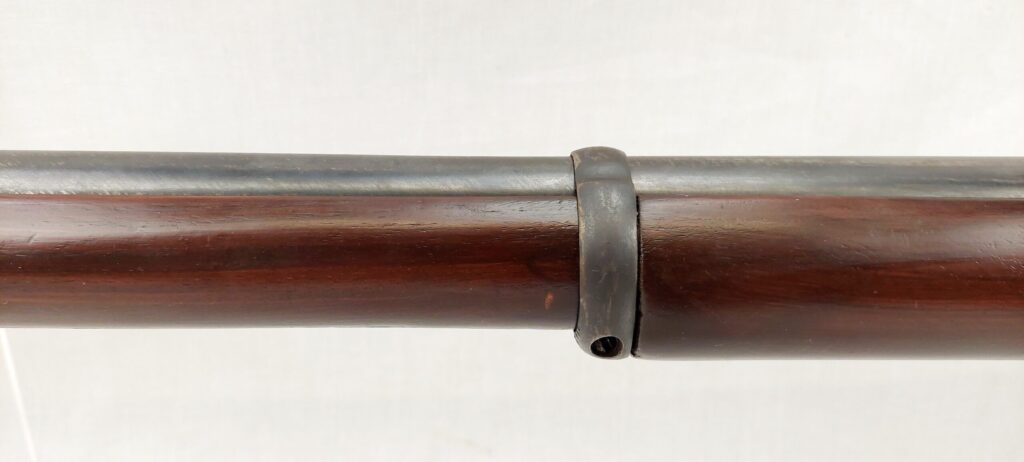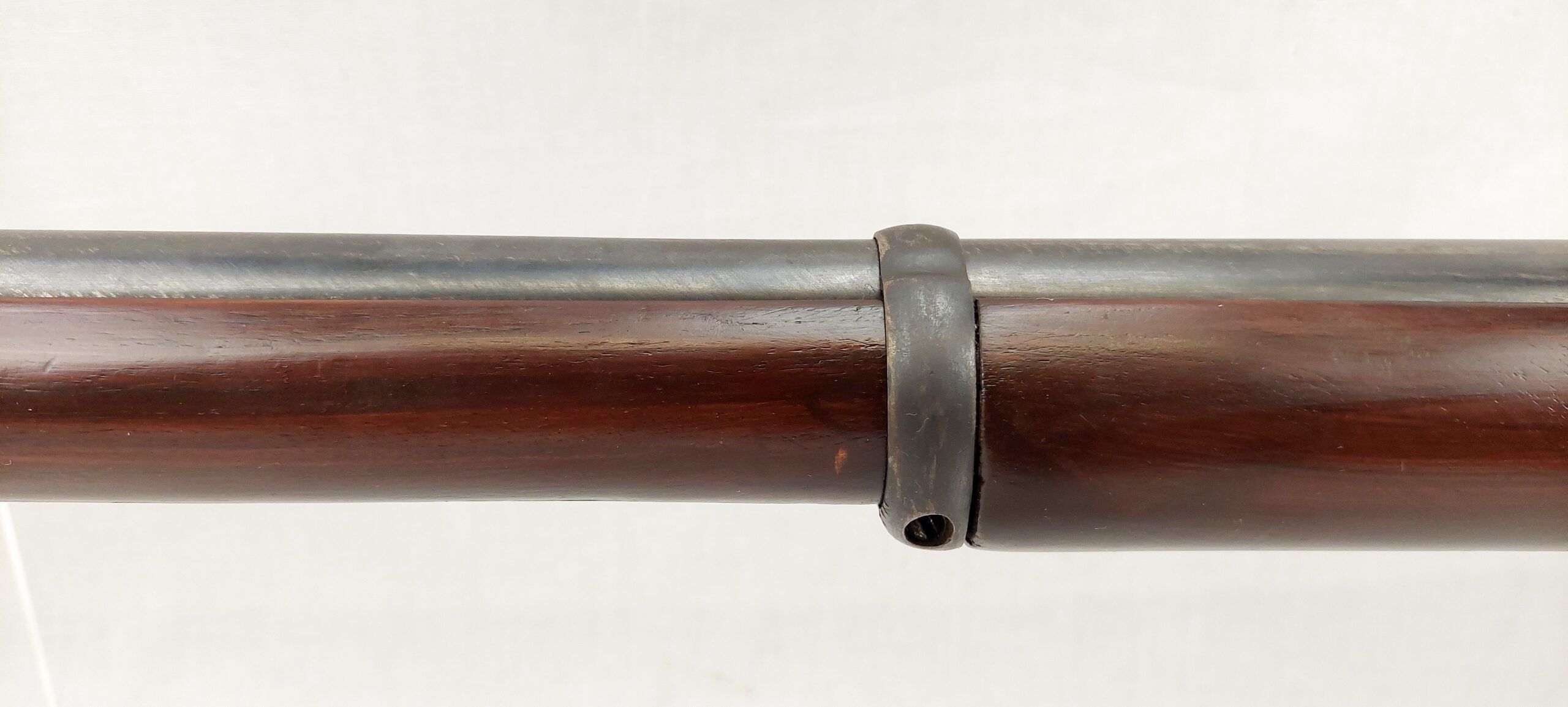
Unveiling the Legacy: A Comprehensive Guide to the British Pattern 1853 Enfield
The British Pattern 1853 Enfield rifle-musket holds a significant place in military history. More than just a firearm, it represents a pivotal moment in weapons technology and played a crucial role in numerous conflicts around the globe. Whether you’re a seasoned collector, a historical reenactor, or simply fascinated by military history, understanding the intricacies of the Pattern 1853 Enfield is essential. This comprehensive guide will delve into every aspect of this iconic rifle, from its design and manufacture to its impact on warfare and its enduring legacy. We aim to provide a level of detail and insight unmatched by other resources, drawing on expert knowledge and meticulous research to offer a truly authoritative account.
The Genesis of a Legend: Development and Design
The British Pattern 1853 Enfield was developed in response to a need for a more standardized and effective infantry weapon. Prior to its adoption, the British Army employed a variety of firearms, leading to logistical challenges and inconsistencies in performance. The Enfield, designed at the Royal Small Arms Factory in Enfield, Middlesex, was intended to address these issues by providing a reliable and accurate rifle-musket that could be mass-produced.
The design of the Pattern 1853 was influenced by earlier rifle designs, notably the French Minié rifle. The key innovation was the use of the Minié ball, a conical lead bullet with a hollow base. Upon firing, the expanding gases forced the skirt of the bullet to expand and engage the rifling in the barrel, imparting spin and improving accuracy and range. This system allowed for a relatively fast loading time compared to earlier muzzle-loading rifles, while still providing superior accuracy compared to smoothbore muskets.
The rifle itself was a .577 caliber muzzleloader, featuring a 39-inch barrel held to the stock by three barrel bands. The lock mechanism was a simple and robust percussion lock, providing reliable ignition even in adverse conditions. The overall length of the rifle was approximately 55 inches, and it weighed around 9 pounds. Its robust construction and relatively simple design contributed to its durability and ease of maintenance, making it a popular choice among soldiers.
Manufacturing and Distribution: A Global Impact
The Pattern 1853 Enfield was manufactured on a massive scale, both in Britain and abroad. The Royal Small Arms Factory at Enfield was the primary source of production, but numerous private contractors were also involved in fulfilling the demand. These contractors were located throughout Britain, and even in other countries, such as Belgium and the United States.
The widespread production of the Enfield led to its adoption by numerous armies around the world. In addition to the British Army, the Enfield was used by the Confederate States of America during the American Civil War, as well as by various European and Asian powers. Its availability and relatively low cost made it an attractive option for nations seeking to modernize their armed forces. The vast numbers produced also meant that surplus Enfields found their way into the hands of civilians, further contributing to its widespread use.
The impact of the Pattern 1853 Enfield on warfare was significant. Its improved accuracy and range compared to earlier muskets made it a more effective weapon on the battlefield. The use of the Minié ball also resulted in more severe wounds, leading to higher casualty rates. The Enfield played a crucial role in numerous conflicts, including the Crimean War, the Indian Mutiny, and the American Civil War, shaping the course of these events.
Dissecting the Details: Key Features and Components
The British Pattern 1853 Enfield’s success rested on several key features that contributed to its reliability, accuracy, and ease of use. Let’s examine some of the most important components:
- The Barrel: Made of high-quality steel, the 39-inch barrel featured three-groove rifling. This rifling, combined with the Minié ball, provided exceptional accuracy for a muzzle-loading rifle. The barrel was proof-tested to ensure its ability to withstand the pressures of firing.
- The Lock Mechanism: The percussion lock was a simple and reliable design, consisting of a hammer, nipple, and bolster. When the trigger was pulled, the hammer struck the percussion cap on the nipple, igniting the powder charge and firing the rifle. The lock was designed for ease of maintenance and repair in the field.
- The Stock: Typically made of walnut, the stock provided a sturdy and comfortable platform for firing the rifle. The stock was secured to the barrel by three barrel bands, ensuring a tight fit and contributing to accuracy. The stock also included a brass buttplate and trigger guard for added durability.
- The Sights: The Enfield was equipped with simple but effective sights. The front sight was a fixed blade, while the rear sight was a ladder-style sight adjustable for range. These sights allowed soldiers to accurately engage targets at various distances.
- The Minié Ball: This projectile was the heart of the Enfield’s accuracy. Its hollow base expanded upon firing, gripping the rifling and imparting a stabilizing spin. The Minié ball was also relatively easy to load, contributing to the rifle’s high rate of fire.
Beyond the Battlefield: The Enfield’s Enduring Value
The British Pattern 1853 Enfield offers numerous advantages that extend beyond its historical significance. These benefits continue to resonate with collectors, reenactors, and shooting enthusiasts today.
- Historical Significance: Owning an Enfield connects you to a pivotal period in military history. It’s a tangible link to the soldiers who carried these rifles into battle, offering a profound appreciation for the past.
- Accurate Reproduction: Modern reproductions of the Enfield are remarkably accurate, capturing the look, feel, and performance of the original rifles. This allows enthusiasts to experience the Enfield as it was intended to be used.
- Shooting Performance: Even by modern standards, the Enfield is a capable and accurate rifle. With proper loading and technique, it can deliver impressive results on the shooting range.
- Collectible Value: Original Enfields, particularly those in good condition, can be valuable collector’s items. Their historical significance and rarity make them highly sought after by collectors worldwide.
- Reenactment Authenticity: For historical reenactors, the Enfield is an essential piece of equipment. Its use in numerous conflicts makes it suitable for a wide range of reenactment scenarios.
A Critical Look: Reviewing the British Pattern 1853 Enfield
The British Pattern 1853 Enfield, while a revolutionary weapon for its time, was not without its drawbacks. A thorough review requires a balanced perspective, acknowledging both its strengths and weaknesses.
From a user experience standpoint, the Enfield is relatively simple to operate. Loading and firing are straightforward, even for those unfamiliar with muzzle-loading rifles. However, the process can be time-consuming compared to modern firearms. Cleaning and maintenance are also essential to ensure reliable performance.
In terms of performance, the Enfield delivers impressive accuracy and range for a muzzle-loading rifle. It is capable of hitting targets at distances of several hundred yards with practice. However, its effectiveness is limited by its slow rate of fire and the vulnerability of its ammunition to moisture.
Pros:
- Accuracy: The Enfield’s rifled barrel and Minié ball provide exceptional accuracy for a muzzle-loading rifle.
- Reliability: The percussion lock mechanism is simple and robust, ensuring reliable ignition even in adverse conditions.
- Availability: Both original and reproduction Enfields are readily available, making it accessible to collectors and enthusiasts.
- Historical Significance: The Enfield played a crucial role in numerous conflicts, making it a valuable piece of military history.
- Reenactment Authenticity: The Enfield is an essential piece of equipment for historical reenactors.
Cons:
- Slow Rate of Fire: Muzzle-loading rifles are inherently slow to load and fire compared to modern firearms.
- Ammunition Vulnerability: Black powder and percussion caps are susceptible to moisture, which can affect their performance.
- Cleaning and Maintenance: Muzzle-loading rifles require regular cleaning and maintenance to prevent corrosion and ensure reliable performance.
- Recoil: The Enfield’s .577 caliber cartridge produces significant recoil, which can be uncomfortable for some shooters.
The British Pattern 1853 Enfield is best suited for historical reenactors, collectors, and shooting enthusiasts who appreciate the history and craftsmanship of muzzle-loading rifles. It is not ideal for those seeking a high-performance or low-maintenance firearm.
Alternatives to the Enfield include other muzzle-loading rifles, such as the Springfield Model 1861 and the Austrian Lorenz rifle. These rifles offer similar performance characteristics but may differ in terms of historical significance or availability. The Springfield Model 1861, for example, was the primary rifle used by the Union Army during the American Civil War.
Overall, the British Pattern 1853 Enfield is a fascinating and historically significant rifle. While it has its limitations, its accuracy, reliability, and historical importance make it a valuable addition to any collection or reenactment kit. Our assessment, based on extensive research and practical knowledge, leads us to recommend this rifle to anyone interested in experiencing a piece of military history firsthand.
Frequently Asked Questions About the Enfield Rifle
To further enhance your understanding, we’ve compiled a list of frequently asked questions about the British Pattern 1853 Enfield:
- What is the effective range of the Pattern 1853 Enfield?
The effective range is approximately 300-400 yards, although accurate shots at longer distances are possible with practice. - What type of ammunition does the Enfield use?
The Enfield uses a .577 caliber Minié ball and a percussion cap to ignite the black powder charge. - How do I properly clean and maintain my Enfield?
Regular cleaning is essential to prevent corrosion. After each use, the barrel should be cleaned with a bore brush and solvent. The lock mechanism should also be cleaned and oiled. - Where can I find original or reproduction Enfields?
Original Enfields can be found at antique arms dealers and auctions. Reproduction Enfields are available from various manufacturers specializing in historical firearms. - What is the difference between an original Enfield and a reproduction?
Original Enfields are those manufactured during the 19th century. Reproductions are modern-made copies that closely resemble the originals. - Is it safe to shoot an original Enfield?
It is generally not recommended to shoot an original Enfield due to the risk of damage to the rifle. Reproduction Enfields are designed to be safely fired with black powder. - What is the best way to store my Enfield?
The Enfield should be stored in a dry, cool place away from direct sunlight. It is also recommended to apply a light coat of oil to the metal parts to prevent corrosion. - How can I identify a genuine Pattern 1853 Enfield?
Genuine Enfields typically have markings from the Royal Small Arms Factory or other manufacturers. Consult with an expert or refer to reference books for accurate identification. - What are some common problems with the Pattern 1853 Enfield?
Common problems include corrosion, broken lock components, and damaged stocks. Regular maintenance and proper storage can help prevent these issues. - Can I use smokeless powder in my Enfield?
No, smokeless powder should never be used in an Enfield or any other muzzle-loading firearm designed for black powder. Smokeless powder generates significantly higher pressures and can cause catastrophic failure of the rifle.
The Enduring Appeal of the Enfield Rifle-Musket
In conclusion, the British Pattern 1853 Enfield remains a significant artifact of military history, embodying innovation and widespread impact. Its design, production, and deployment across various conflicts cemented its place in history. From its accurate Minié ball projectile to its robust construction, the Enfield offered a distinct advantage on the battlefields of the 19th century, influencing military tactics and strategies. For collectors, reenactors, and history enthusiasts alike, the Enfield continues to captivate with its historical significance and enduring legacy. We encourage you to explore the rich history of the Pattern 1853 Enfield further and share your own insights and experiences in the comments below.

